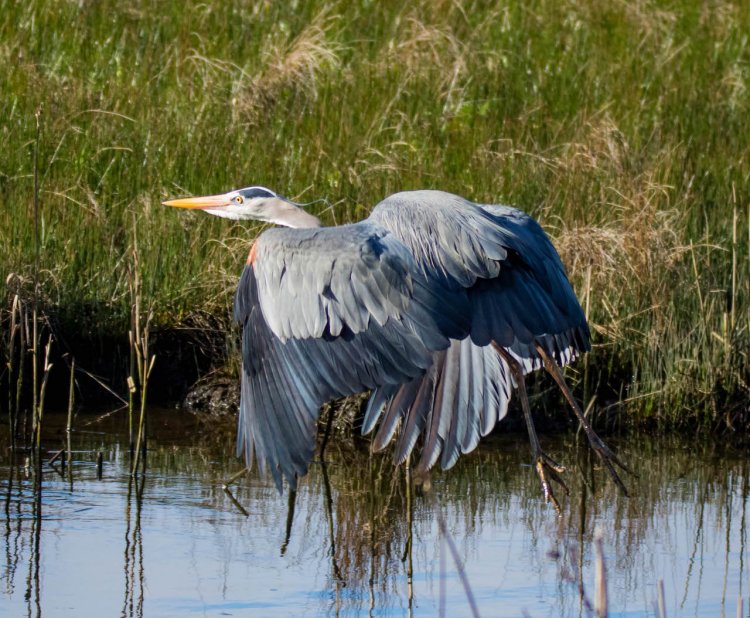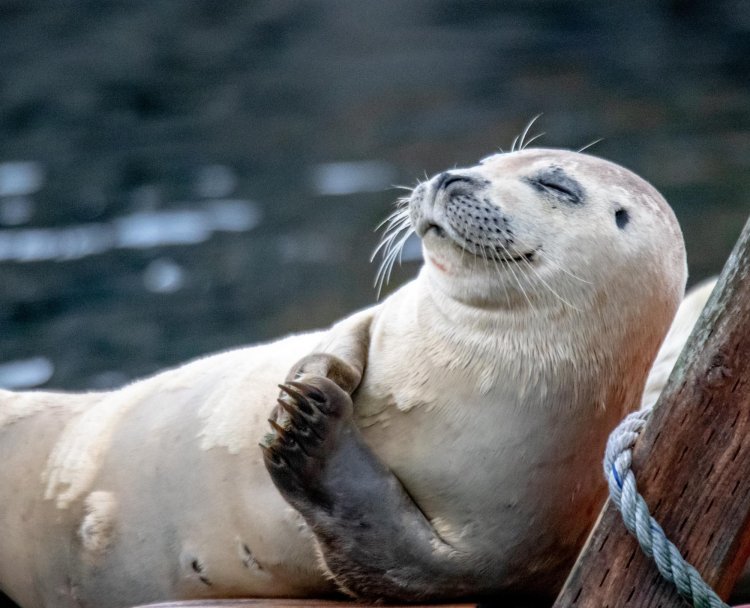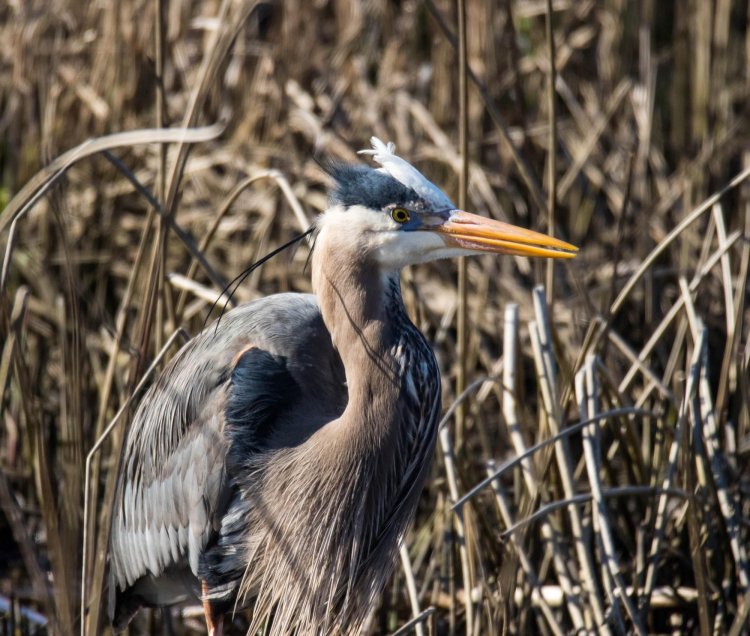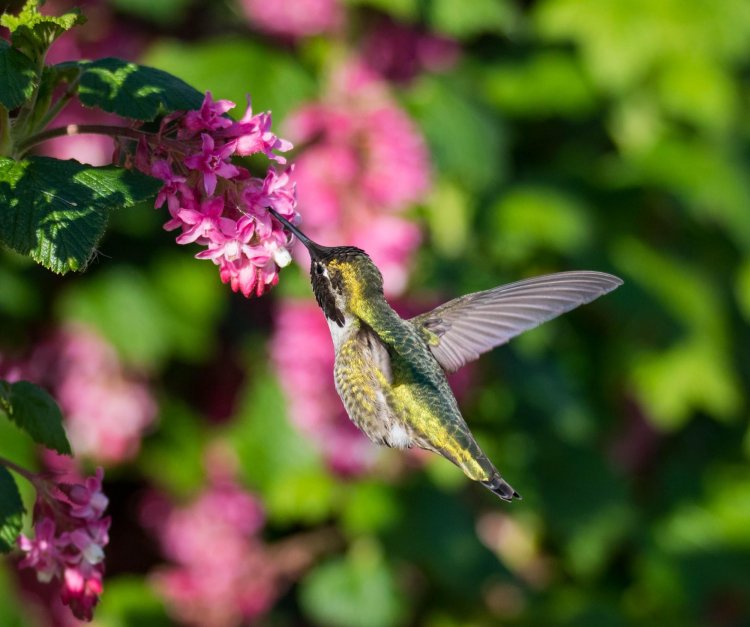The United Nations General Assembly (UNGA) declared March 3rd UN #WorldWildlifeDay almost a decade ago to raise awareness and celebrate the good work good people are doing globally to sustain life as we know it — for all life. This year’s theme: “Recovering key species for ecosystem restoration.”
Recovery and restoration resonate in Edmonds. Living in peace and harmony with the birds of the sky, fish of the sea, and all flora and fauna. The way Nature intended.
It’s what the community strives to do every single day.
As the U.S.’s 41st certified Community Wildlife Habitat City (June 2010), Edmonds remains ever vigilant and committed to the principles of responsible, sustainable, seasonal stewardship, fostering rich, nurturing environments through ever-creative, inventive means.
Underwater Park
Scallops, sea urchin, anemones, shrimp, Giant Pacific and Red Octopus, gobys, Dungeness and hermit crabs, geoducks, lingcod, sea cucumbers, moon snails and heart cockles… Twenty-seven-plus-acre, nutrient-rich Underwater Park — established at Brackett’s Landing in 1970 by the City of Edmonds and run by volunteers — invites natural exploration.
The marine sanctuary of tide and bottom lands rewards the senses with a colorful, exotic diversity like no other for the roughly 25,000 divers who come from all over the Pacific Northwest every year to train, learn, and appreciate the importance of conservation, recovery and restoration.
Head north, just past the Edmonds-Kingston Ferry Landing, at the foot of Main Street, to find an underwater wonderland, teeming with man-made features (reef structures, sunken, aged vessels) and trails — half of which has been developed with divers in mind — loosely tethered together with bottom-anchored ropes.
Ocean advocate Annie Crawley takes her young PADI-AmbassaDivers-recognized Dive Team to the Underwater Park regularly for an unforgettable learning experience and to foster a passion for scientific diving, underwater photography, and ocean advocacy — passing it on, paying it forward.
Visitors who don’t dive can view a public information map of some of the more recent features.
Demonstration Garden
Free to the public, the Edmonds Native Wildlife Habitat Demonstration Garden is a living example of transforming a backyard space into a wildlife habitat sanctuary and part of an overall city-wide habitat corridor.
The Edmonds Demonstration Garden first unveiled itself and its promising concept on April 25, 2010, with the planning and development of residents aimed at building a better, thriving relationship with Nature.
Located on 95 Pine Street, volunteers host regular work parties on Saturdays to help take care of the living, thriving garden blooming with native plants. They also conduct workshops, special presentations, and other events at the demonstration garden, including tips on how to use coffee for bird conservation and saving Washington’s Bigleaf Maple trees.
Fish Hatchery
The Willow Creek Salmon & Watershed Education Center (WCSWEC), 95 Pine St., raises about 80,000 Coho salmon and releases them into Washington rivers — an eco-friendly practice since 1985. Sound Salmon Solutions took over from the Edmonds chapter of Trout Unlimited (many volunteers still help with education and scientific input) after 2014.
The public can sign up to feed the fish and learn more about keeping salmon flourishing in rough waters. Besides a micro-hatchery, there is a community rental classroom and short walking trails along Willow Creek.
Volunteers continue to help keep the fish hatchery running on all four cylinders, while educating and involving more of the community, especially student groups, in salmon recovery and wetland protection efforts.
Backyard Habitats
Edmonds Wildlife Habitat Project does a lot to Protect, Preserve, and Restore in Edmonds, including hosting tours of certified backyard habitats in the area, where humans and wildlife get to co-exist.
One of the most ingenious ideas to come from the environmental movement, backyard habitats allow everyday people to do their part by providing sustainable spaces for wildlife, like adding brush piles and feeders, planting trees for shade, and leaving some seeds from plants for resident birds.
A backyard becomes a wildlife habitat when it can offer life’s basic needs — food, water, shelter — combined with a personal aesthetic that compels us to slow down and literally smell the roses.
Seattle naturalist, photographer, and author of “Nature Obscura: A City’s Hidden Natural World,” Kelly Brenner took a tour of five Edmonds backyard habitats as a part of the Puget Sound Bird Fest, and aptly described the feeling of meeting nature where it and humans live in her Sept. 16, 2010 Metro Field Guide.
The backyard habitats managed to reflect the different aspects of the homeowners’ individual interests, geographical locations, and sense of place…horticulturists, sea lovers, or typical suburbanites doing the most with the least. But all invited wildlife to come, enjoy, and stay awhile.
“Among the lessons that can be drawn from these gardens is how to balance an interest with habitat. In two cases the interest was horticultural, a collection of Japanese Maples in one yard while dahlias and cactus were a focus of another and in a third case chickens were integrated with the habitat. It was also fascinating to see how creatively each had solved problems and added their own personal touches.
“It was very interesting to see these yards and how the owners had interpreted their landscape and surroundings and created their own habitat using their own design vision. It’s an excellent example of how very diverse habitat design can be when it’s adapted by different people with different needs and wants. This was really a lesson in how to take the textbook directions for creating habitat and make them work for the individual. As a result, each yard has a very definite personality [Metro Field Guide, “Edmonds Backyard Habitat Tour,” Sept. 16, 2010].”
Wetland
Edmonds Marsh is historic, one of Puget Sound’s “few urban, tidally-influenced, saltwater estuaries [City of Edmonds website].” The Coast Salish Peoples hunted and fished and bonded in these waters once upon a time before the loggers and the homesteaders followed their so-called Manifest Destiny, uprooting land and sea dramatically.
Located on 180 W. Dayton St. right across from Edmonds Waterfront, city-owned Edmonds Marsh Marine Estuary comprises 22.5 acres of wetlands, home to countless native plants, wildlife (amphibians, insects, deer, river otter, coyote), and over 190-200 species of birds… a birder’s paradise.
Before settlements and urbanization took over, Edmonds Marsh was much bigger, almost 40 pure, pristine acres.
“After urbanization, the railroad and man-made barriers blocked the tidewater flow, creating a freshwater-dominated wetland fed by Willow Creek and Shellabarger Creek. In 1988 the saltwater flow was reestablished by opening the tidegate most of the year. The site now contains diverse wildlife habitat supported by both fresh and saltwater vegetation [City of Edmonds website].”
Happy #WorldWildlifeDay, every day!
Featured image of Edmonds Marsh by Carol Banks Weber
Additional images of Ocean Annie and her Dive Team by Matt Hulbert
Wildlife photos by Janine Harles








